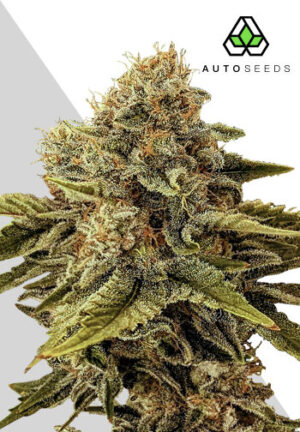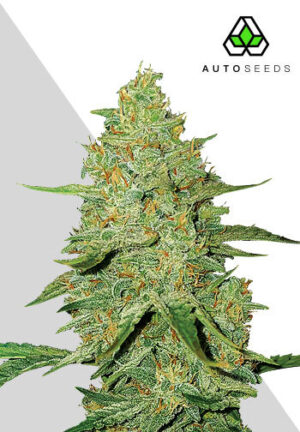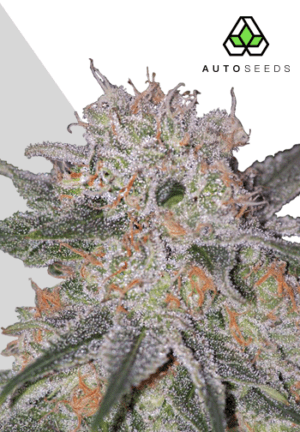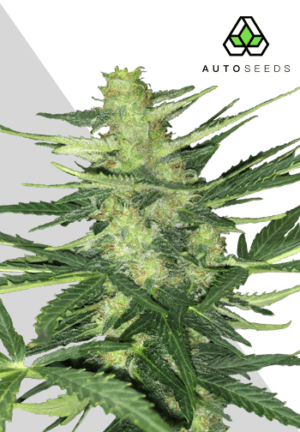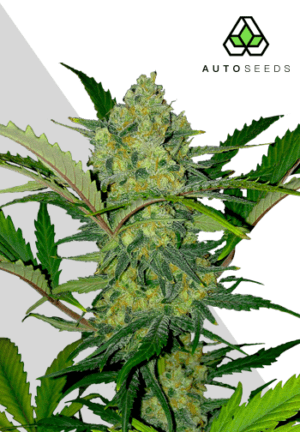Can you grow autoflower seeds outdoor?
Yes, autoflowers grow excellently outdoors. Many people think of autos as indoor plants because of their small size but they thrive when grown outdoors and thanks to their ruderalis genetics they are more hardy than photoperiod cannabis plants. Because they automatically switch from the vegetative growth stage to the flowering stage as they age, they don’t rely on changes in light to start producing buds, making them ideal for outdoor growing if you have short summers. They’re hardy, fast-growing, and can produce great results with minimal fuss, perfect for beginners or those looking for a straightforward growing process.
What is the best autoflower strain for outdoor?
If you’re in a hot climate, Acapulco Gold Auto is the perfect strain. Being a sativa landrace native to Mexico Acapulco Gold is strain that thrives under the sun, reaching heights of 100cm-150cm. With a THC content of 17-20%, it’s ready for harvest in 80-90 days from seed, offering a classic sativa high.
For those in colder climates, Polar Express is the perfect choice. This indica strain is a blend of Northern Lights #5, Californian Kush, and Lowryder 2, growing to a more modest 30cm-80cm. With a THC range of 19-22%, it finishes quickly in 60-80 days, delivering a potent stone and buzz.
How much do autoflowers yield outdoors?
You can expect the average autoflower to produce about 30 to 150 grams of bud per plant when grown outdoors. The more sunlight and care they receive, the bigger the potential yield. At Auto Seeds we have mastered the art of breeding autos and have been able to produce plants such as Auto Pounder that can produce up to 200 grams in the right conditions.
Do outdoor autoflowers need nutrients?
Yes, autoflowers grown outside will still need nutrients to thrive. However, they often need less nutrition than photoperiods due to their smaller size and faster growth cycle. If you use a good quality organic soil mix that already has some nutrients mixed in you will need a lot less than if you were to grow indoors using hydro or coco coir.
Is rain water good for autoflowers?
Yes, rainwater is great for autoflowers or any cannabis plant. It’s often considered better than tap water for watering plants because it is naturally soft and free of chlorine and other chemicals commonly found in municipal water supplies. Rainwater also has a balanced pH and can contain beneficial microorganisms and minerals that help plants grow. Using rainwater for your autoflowers can support healthy growth and potentially improve your harvest. Just make sure the rainwater you collect is clean and free from pollutants.
Things to be aware of growing autoflowers outdoors
When growing autoflowers outdoors, there are a few key things you should to give yourself ensure a successful harvest:
Climate and Timing: Autoflowers can be grown in various climates, but it’s essential to time your grow to avoid extreme weather conditions. Start them in late spring or early summer for the most stable weather.
Pests and Diseases: Being outdoors, your plants are exposed to pests and diseases. Regular checks are necessary to catch any issues early. Natural repellents and proper spacing can help minimize these risks.
Watering Needs: Although autoflowers are generally drought-resistant, consistent watering (without overdoing it) is crucial. Ensure good drainage to prevent root rot.
Soil Quality: Autoflowers thrive in light, airy soil with good drainage. Starting with a high-quality potting mix can make a big difference in plant health and yield.
Nutrient Requirements: Autoflowers need less nutrients than photoperiod strains. Use a light hand with fertilizers, especially nitrogen, in the early stages to avoid nutrient burn.
Sunlight: Autoflowers love sunlight. Position them in a spot where they can get at least 8 hours of direct sunlight a day for optimal growth and flowering.
Harvest Times: Since autoflowers have a set life cycle, knowing when to harvest is crucial. When you reach week 5 of flowering start checking the trichomes, when 50-70% of them turn cloudy with a few amber your plants will be at peak potency and ripe for harvest.
Training Techniques: Autoflowers have a short vegetative stage, so rather than use HST techniques like topping, opt for less stressful methods such as scrog or tie and bend where you will be able to achieve impressive results.

